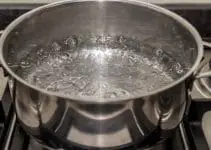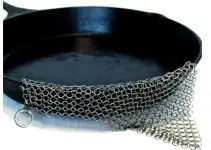With the advent of small, portable in-home sous vide machine, the concept of cooking food encased in plastic in temperature regulated hot water baths has quickly taken to the mainstream. As this cooking methodology has become more prevalent, issues have arisen with recipes requiring extended periods of time in the heated water environment.
Why are sous vide balls needed?
As it turns out, leaving a large vat of water sitting out at temperatures hovering between hot-bath and boiling points for longer than sous vide typically is utilized has an unrealized after effect: evaporation. The plethora of uses for sous vide is expanding rapidly, and this, in turn, is introducing recipes such as short ribs, chuck roast, and pulled pork, all of which require at least 24 hours to soak and cook.
When an open hot water bath is left unattended for that long, the water inside can evaporate into the atmosphere to the point where the sous vide machine has automatically shut itself off for an unknown period. This leaves the cook with the difficult decision to either terminate the recipe or make an assumption of how long it has been inactive and re-introduce hot water from there.
What are people doing about it?
To combat this issue, many people have resorted to cooking their sous vide recipes in large plastic containers instead of pots. Plastic, far better at insulating than its metal counterpart, assists the water in retaining its temperature for longer periods of time. Additionally, the insulation benefits of plastic are noticeable in energy consumption as well.
Some chefs have added on to this plastic container sous vide method and covered the top of their plastic containers with aluminum foil or plastic wrap. This works to prevent the escape of excess heat and keeps cooks from needing to slice a permanent sous vide cooker sized hole in the lid of a plastic storage container, ensuring that the container can never be utilized for its intended storage purpose again.
Here’s where sous vide balls come in
Recently, physics-savvy cooks have migrated to the Church of the Ping Pong Ball as a replacement for foil, plastic wrap, or butchering of their container lid. These hollow plastic balls float on the surface of the hot water, providing insulation to the sous vide bath. Furthermore, the Ping Pong balls assist the steam in condensing back into hot water, allowing the condensed water to drip down into the water bath once again.
While the Lid Method and the Foil/Plastic Wrap methods work for their intended purpose, there are several additional advantages to using Ping Pong balls as a makeshift “cover”:
- Plastic balls are completely reusable. To dry them, empty the water from the sous vide container. That’s the only step. As the water is already hot, within minutes, it has evaporated from the wet Ping Pong balls. No drying process, no waste.
- A layer of thin plastic balls conforms to the shape of the container being used. This allows for quick addition and removal from any size container without the need to wrap and secure.
- Plastic wrap, carved lid holes, and foil redirect the venting steam to the vicinity of the sous vide unit. As these units are designed to handle small amounts of steam, they are not built to handle the steam from an entire hot water bath condensed into a small area. Spherical shapes allow for even steam rising across the entire surface of the container
- Checking on the status of a cook is simple, as lifting and dropping dozens of balls can be done with ease from the hot water bath mid-cook, and lifting cooking items from inside the tub does not require removing and replacing plastic or foil.
Are Ping Pong balls a necessity for the prevention of catastrophic problems during long sous vide cooking sessions? No, but there are numerous practical advantages to using them over the aforementioned alternatives.
Conclusion
I recommend the Sous Vide Balls by Wasserstein. They’re well-made, BPA free, and long-lasting. They’re also very inexpensive on a $ per ball basis. You can find them here on Amazon.
Not what you’re looking for? Head on over to our super comprehensive article on best sous vide machine reviews and sous vide vacuum sealer reviews!






